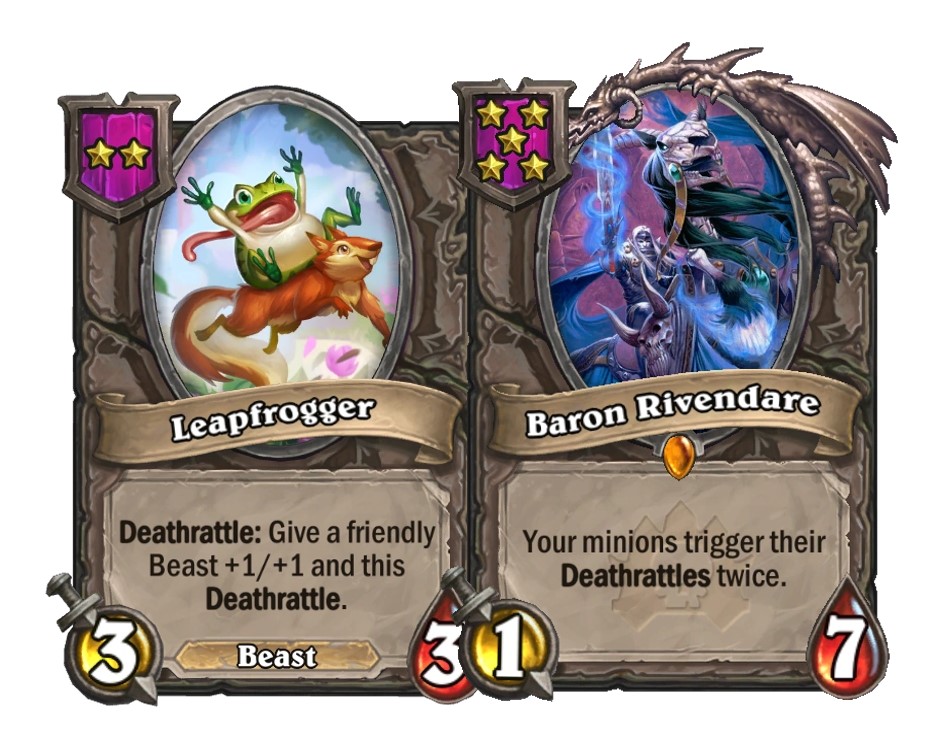8653: Leapfrogger
题目描述
Notice: If you have played Battlegrounds in Hearthstone and know the mechanism of leapfrogger and Baron Rivendare, you can start at the fourth paragraph, but note that the context of the problem is simplified and may not be the same as what is in-game.
In the famous card-collecting game Hearthstone, there is a mode named Battlegrounds, ba
An interesting thing about leapfrogger is that its deathrattle is stackable, i.e., a minion is allowed to have multiple, say kk, deathrattles of the leapfrogger at the same time, then when this minion dies, it will randomly give a friendly beast(if there exists any) the effect of +1/+1 in stats and this same effect, repeated kk times. Note that in each of the kk times, the friendly beast is chosen independently at random. What makes things more interesting is a minion in Battlegrounds called Baron Rivendare that can double the effect of deathrattles when it is on the board. When Baron Rivendare is on the board, and a leapfrogger dies, its deathrattle is triggered and given to a random friendly beast, twice. If both deathrattles are given to the same friendly beast and that beast dies, still with Baron Rivendare on the board, each of the two deathrattles of leapfrogger on the beast is triggered twice, so that a total of four copies of the deathrattle of leapfrogger are triggered and given to a random friendly beast... The speed the deathrattle of leapfrogger spread when Baron Rivendare is on the board is quite insane and is what makes the "leapfrogger build" a possible and quite powerful strategy in Battlegrounds.
That is quite a lot for the background. Let's then make some simplifications. We assume the deathrattle of leapfrogger can be given to any minion instead of only to beasts. We also assume that ALL Deathrattles will be triggered kk times for the sake of the problem. The question is,

输入格式
The first line contains an integer T(1≤T≤10), denoting the number of test cases.
For each test case, the input consists of one line containing two integers n,m. (1≤n<998244353,2≤m≤105), denoting the number of minions and the parameter, respectively.
输出格式
输入样例 复制
1
3 2输出样例 复制
6